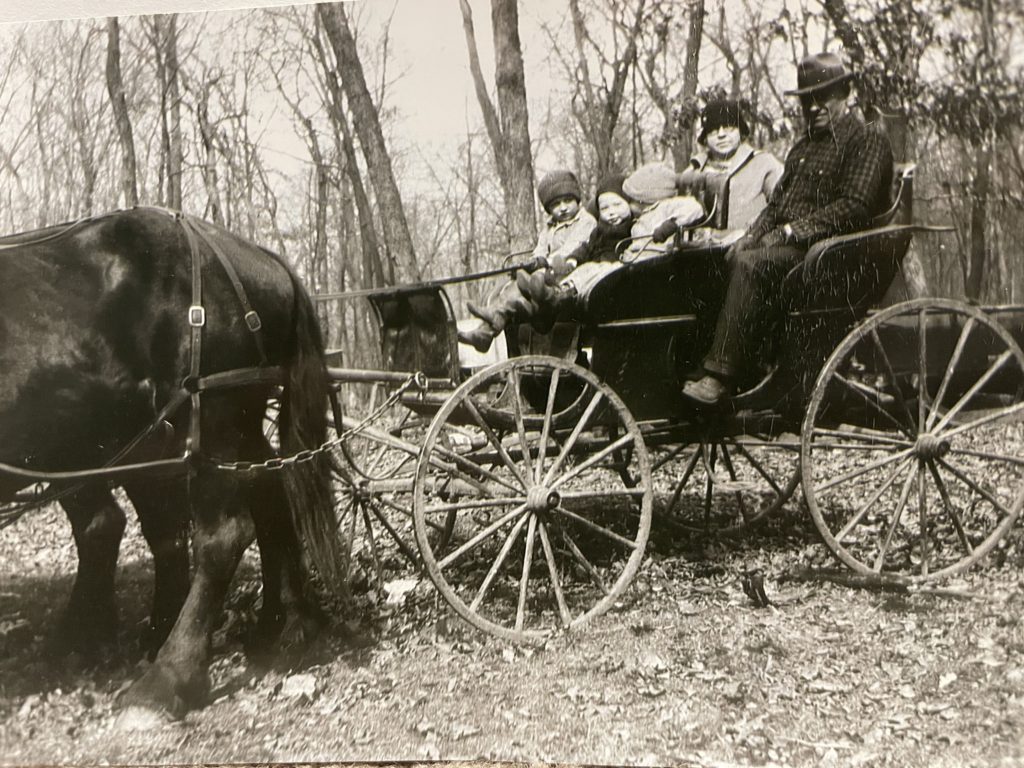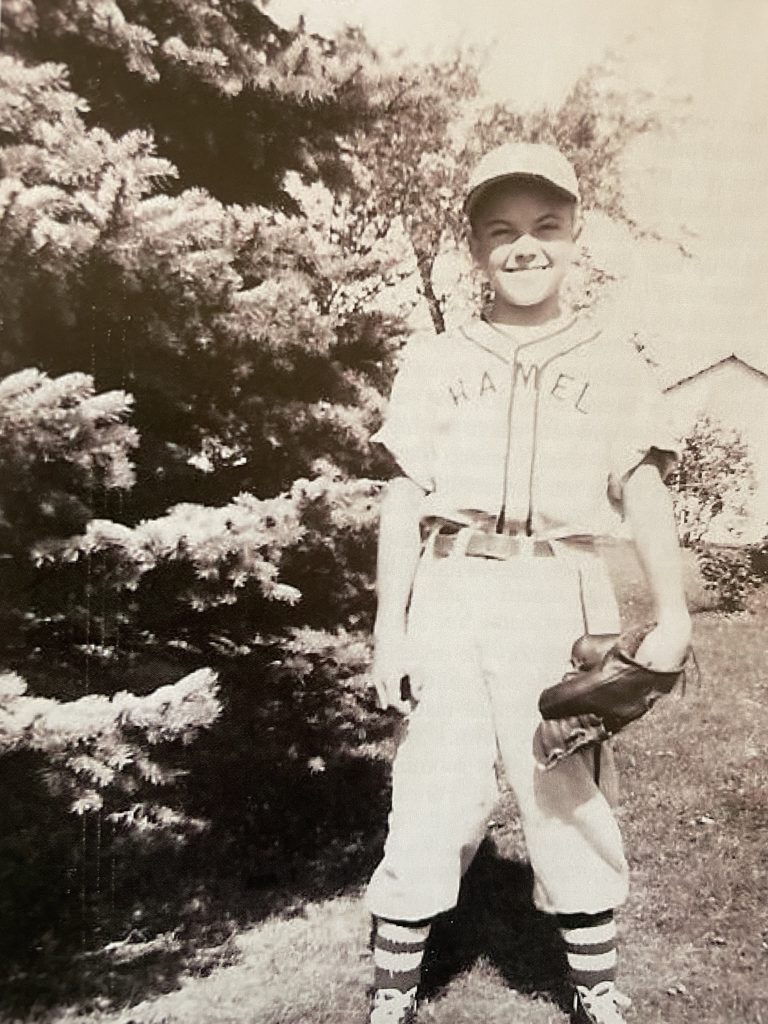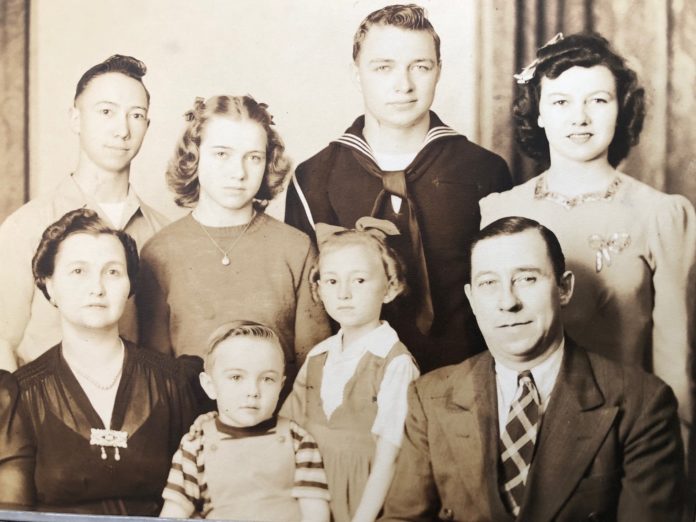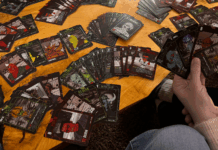Hamel is one of the last “small towns” standing that can boast of its close proximity to Minneapolis while maintaining its original main street charm. Complete with historic buildings, there is an atmosphere that cannot be replicated by strip malls or developments. As hundreds of sunsets have come and gone through the years, so the lineage of families who originally staked their roots to create this first community in Hamel is waning.
The Schmidt family’s history dates back to Civil War times when the Homestead Act of 1862 was enacted during the westward expansion of the United States. The U.S. government stated any adult citizen, or intended citizen, could claim 160 acres of land provided they “improved” the plot by building a home and cultivating the land. Millions of immigrants, women, and formerly enslaved men and women were offered this opportunity.
It is the purpose of our government “to elevate the condition of men, to lift artificial burdens from all shoulders and to give everyone an unfettered start and a fair chance in the race of life.”
~President Abraham Lincoln, July 4, 1861
SCHMIDT LAKE and SCHMIDT LAKE ROAD NAMESAKES
When Frederick Henry Benjamin “FHB” Schmidt emigrated from Prussia to Chicago in 1853 and Marie Barbara Ortlieb came to New York in 1854 from Ostheim, Germany, they couldn’t have predicted their good fortune in store from the upcoming Homestead Act of 1862. They were married in 1857, the government granted them 160 acres just west of Hamel in Plymouth; from that point they started their family. Gordon (Gordy) Schmidt, FHB’s great grandson, explained, “On that plot of land was a lake, now known as Schmidt Lake. Back then Schmidt Lake Road was just a gravel road which today runs right to Wayzata High School.” Gordy’s grin widened as he explained, “His (FHB’s) house is still standing there – somebody from California bought it and they thought they died and had gone to heaven.” In 1883 FHB bought another 180 acres from the Hamel family and with their eight children farmed the combined property for many years.
Up until 2019 Roger “Pete” Schmidt, Gordy’s older brother, faithfully tended the Hamel Library and regularly attended the Uptown Hamel Association meetings until COVID-19 stopped the in-person meetings early in 2020. Pete passed away this past January just two weeks shy of his 93rd birthday, but not before he shared his family’s history and his own memories. “My grandfather was Otto Carl Schmidt,” Pete stated in memoirs he left his family. “My grandmother was Sibyl Deziel, daughter of William H. Deziel from Ontenegon, Michigan.” Otto and Sibyl farmed the land between Holly Lane and Peony Lane in Plymouth, to north of Highway 55 and south of the Burlington Northern Railroad tracks in the area known as Hamel, with the original land and buildings they inherited from FHB and Barbara in 1883.

FARMING, MAPLE SYRUP and ST. ANNE’S CEMETERY
Otto and Sibyl raised three sons and a daughter who helped with farming crops and raising livestock. Within their property lay 40 acres of woods where the Schmidts were famously remembered for their maple syrup. “They used to tap 500 trees or so,” Gordy explained of the family operation, later of which Pete and his sons took over. “All the relatives would come in on horse and buggy and throw all of the cans on the buggy. I was pretty small, I remember it because I rode the buggy. It was like a hay wagon. Pete and his sons still did it last year, it’s been a part of the family history for many many years. The last tapping was around 75 trees because a developer bought half the woods.”
Although Sibyl was raised Catholic, as a strong Lutheran Otto wouldn’t allow her to attend Mass. When she passed away, her Catholic background wasn’t denied to her as she was buried in St. Anne’s Cemetery on Hamel Road next to her Uncle Paddy and Aunt Rose, with her Lutheran husband buried next to her upon his death. Amongst other family members, Pete joined the family plots most recently in February 2021.
One of Otto and Sibyl’s sons, Gordon Schmidt (Pete and Gordy’s father), bought a house from the Fortin family located on the corner where Rusted Nail – formerly known as Fortin Hardware – now stands. According to Pete in his memoirs, “The Fortin Hardware people owned it (the house) and wanted to build a new one. They hated to tear it down so my dad bought it.” He described how his father, Gordon, moved the house down Hamel Road all the way to the corner of the Schmidt farm – now Peony Lane and County Road 9. “It was really nice,” Pete recalled. “We had running water, a bathroom and a wood furnace!” Pete’s brother, Gordy, also spoke of it fondly. “It’s a yellow house, still sitting there. As all these kids drive by to the new Wayzata HIgh School, they go by it every day. And they can’t believe that house came from Hamel.”

HAMEL BASEBALL
“I probably had the greatest childhood anybody could have,” Gordy smiled. “I grew up a mile out of town on the farm, I had farm chores and cows and pigs and chickens, I had it all. Our whole family played baseball, I would ride my bike up to Hamel two or three days a week and we’d play down at the ball field. The first ball field was right below the Hamel hill, down behind the library. The second one was in our pasture, right across from that little yellow house that sits on the corner of Peony – there’s a schoolhouse sitting there now.
“A lot of the original buildings are still here,” Gordy fondly recalled Hamel Road, and the small communities of Hamel and Medina from a time decades ago. “The feed mill. The bank. The Fortin Hardware building which is now Rusted Nail. To me growing up in a small town was the greatest. I went to a one room schoolhouse on Holly Lane called DeZiel School at that time, but it was District 47. We had 23 kids in the school, grades one through eight. And when I graduated from that school, we went to Wayzata High School. It was on Highway 12, now Wayzata Middle School.”
“I would wake up, play ball, and then we’d go into Sheridan’s Bar (at the intersection across the street from Farmers State Bank of Hamel, the original building is standing but vacant at the time of this writing), get ice cream and pop and sit on the bench – which is still there! The bench was where people sat to catch the Greyhound bus. The only route between Paynesville and Minneapolis was the Greyhound bus and it went right through Hamel, right past our house all the time. There was no Highway 55. I remodeled the bench, made it a little more sturdy and put a plaque on it.”
Gordy recalled days past when life was much different. “As far as growing up in a town like this, you know everybody. You could find 250-300 people at a Sunday afternoon ballgame. People didn’t have anything else to do, so they came in from all over, especially when it was Hamel and Loretto – big rivalries! The professional wrestler, Verne Gagne, grew up in this area too. I was at an old timers baseball game, and they brought back all these guys, the old coach at the University of Minnesota. The new coach at the University of Minnesota. They came out here and Verne Gagne used to play ball here. Actually he played down in our pasture, but he was pitching, and I was 16 years old. That’s when I started with the town team, and I hit a double, and I got all the way to second base and Verne, who used to be my babysitter, and he would haul hay for my dad, but he came up to second base, and he was famous for his airplane spin. He picked me up and spun me around, over his shoulder in an airplane spin, so that was a big thrill.”
Both Pete Schmidt and Gordy Schmidt have been honored for their baseball prowess, dedication and coaching in the Hamel Hawks Hall of Fame.

SMALL TOWN LIFE
Gordy described living in a small town as a young adult. The American Legion building on Hamel Road served as the community gathering place with its dance floor above and a restaurant below. Bands arrived by train back then from Minneapolis to perform along with single women who came to dance. That same evening the band and the women would return to Minneapolis on the train while the locals rode their horse and buggies home just in time for early morning chores.
When Medina Entertainment Center was built in 1956 – then known as Medina Ballroom and Lanes, it became a part of everyday life. Gordy often stopped there for a break after work before going home. He described a day most who lived in the area won’t ever forget. “I taught school for 33 years, but every summer I worked with my brother, Pete.” Pete owned a formica counter business, by then with operations in the former Sheridan Bar building in Hamel. “I just stopped (at Medina Ballroom) for 15 minutes for a beer, then I went home for supper. A half hour after I left the sirens were going crazy, it was a wild time.” There had been an accidental explosion at “the Medina” (as it is fondly referred to by long-time residents) which tragically killed two 17 year old local girls who were working there at the time, owner Bob Raskob’s daughter, Kathy and her best friend, Lori Ellingson.

GORDY’S CLAIM TO FAME
“I was 18 years old, not knowing what to do, not necessarily a farmer. My brother Hugh told me to join the armed services. He did, my other brother did also – they both served in World War II. So I joined the army and went to Fort Hood, Texas. And that’s where Elvis Presley took his basic training, as well as myself. I was a radio operator. He was in the transportation department. We got our orders to go to Germany. So we all got on the ship, the USS Randall — Elvis was on there, we could see him pretty much everyday. I got four autographs and if I had had a camera, taking a picture with Elvis and me would have been fun. When we got to Bremerhaven, Germany, all of us were on the top of the ship, Elvis was let off the ship first, and there must have been 20,000 German kids yelling, ‘Elvisy! Elvisy! Elvisy!’ because he was just 23 and drafted. So that was wild. They had a variety show on the ship and he had a contract that he could not perform publicly so he played backup piano for all of the guys who were singing for this variety show. Boy could he play the piano. A lot of people didn’t realize this but he was really something. You could talk to him just like I’m talking to you right now, just an old shoe. Everybody thought he was a great person and he was a great person. Sadly, he probably couldn’t live his life out the way he wanted. That’s my claim to fame because my wife loved Elvis, and that’s why she married me.”
As we walked down memory lane, Gordy talked about the families as they relate to the Hamel Road buildings. “The Sheridan Building was a bar, then a post office, living quarters and hotel upstairs. Then the livery stable – the cement building – was where my brother’s formica counter business was. Pete bought the whole thing, remodeled it, and turned it into an apartment building. Inn Kahoots used to be Peppins Bar, then it was Harold & Duane’s. The VFW has been there a long time, that used to be a bar also. All these places had gas pumps in front.
Then there was “Howie Shaver of Howie’s Barber Shop, but he lived out of town. Donnie Faue, he lives right down the road, the Raskobs. Russ Bouley who used to have the lumberyard, the sawmill was right back there behind Fortin’s. Where the tall apartment building stands there, that’s where their house sat. His boys run the Hamel Lumber. Clifford Fortin, he lived in the house right next to the apartment building. He wrote a real detailed history of Hamel. Harry Dorweiler bought the bank and took it over, theirs was one of the only banks in the whole country that didn’t fail in 2009. Ed Holmes, he lives in Arizona now. A lot of people have just moved away. That’s why I say there’s only a few people left who know the history of Hamel. Adam’s house right across the street, which is now a massage parlor (Buzzella Massage). He’s the guy that built the church. The Dykoffs, there’s a few left. But they’re all younger. So it’s my generation, now, who has to tell the story. Which is fun to do.”
MAINTAINING MEDINA & HAMEL TRADITIONS
Although individual Schmidt family members have scattered throughout the state, country and abroad, the Schmidt extended family gets together every year in nearby Greenfield at Pete’s son, Steve’s place, complete with a market and live music for their annual “Haystock” family reunion.
“All my brothers and sisters have died,” Gordy said matter-of-factly. “Pete, my oldest and closest brother, just passed away. He lived right across from Hollydale Golf Course in the Schmidt Woods for 60 years. And he died in that house, so I guess you can say it’s a good way to go, stay right in your own home. I have five children and they’re all gone (moved away).”
With Pete’s passing, Gordy has taken over the helm volunteering at the Hamel Library. “In Hamel I sit under that beautiful tree in front of the library. And I just love it when people come up and say, “Do you know anything about this town? And I can’t wait to tell them we had three grocery stores, believe it or not, two or three bars, a feed mill, sawmill, hardware store, bank, doctor, lawyer, we had everything. I can honestly say, I think everybody feels the same way that grew up around here. We just had a wonderful life. ”
*This interview has been edited for brevity and clarity.







